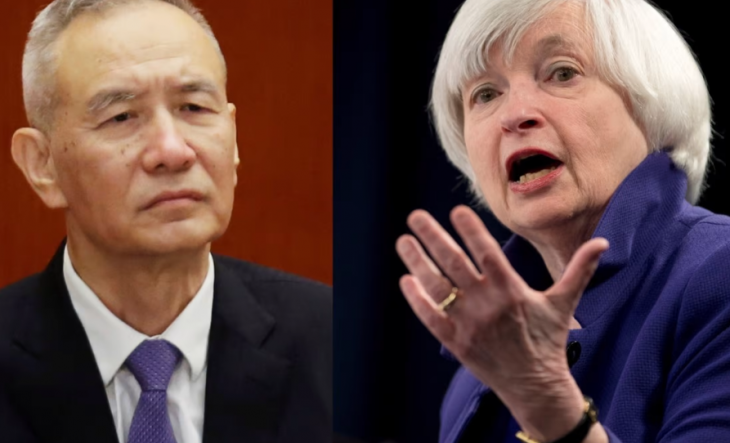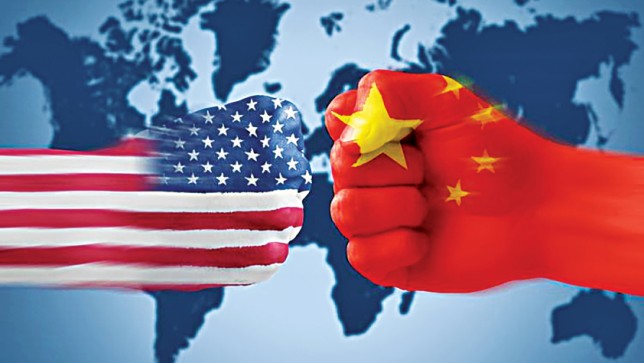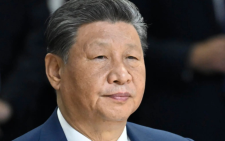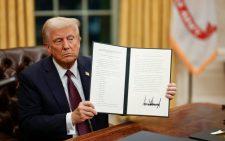U.S. economic ping-pong with China boomerangs, hits global economy

For the umpteenth time, the United States and China on Tuesday held a meeting to discuss mutual economic issues of concern. In their latest meeting on July 5, U.S. Treasury Secretary Janet and Yellen Chinese Vice Premier Liu held a virtual discussion on the macroeconomic situation including the challenges this has had on both the global industrial and supply chains.
Official releases after these meetings are always positive and indicate that there was substantial movement towards resolving the pertinent issues. But it appears that the meetings have become like deadlocked arm-wrestling matches with the U.S. unable to pin its opponent’s arm on the negotiating table. Meanwhile, this impasse is costing the global economy billions of dollars every year from revenue shortfalls, broken supply chains and missed trade opportunities almost exclusively from U.S. action.
According to a research published in June 2019 by Bloomberg, global losses from this trade imbroglio could cost the world U.S. Dollars 600 billion by 2021. According to the study, the economic Gross Domestic Product (GDP) will be down 0.5 percent in China and 0.2 percent in the U.S. by 2021, with a “nightmare scenario” predicting a wiping off of 0.9 percent and 0.7 percent, respectively. The financial markets were also likely to be hit hard, which would compound the aggravated situation.
The optimism that under U.S. President Joe Biden relations with China could be revamped to pre Donald Trump’s era soon faded as Biden actually doubled down on his predecessor’s vitriol. The rigid mindset and determination was confirmed on June 22 when the U.S. ban on Xinjiang imports, the Uyghur Forced Labor Prevention Act (UFLPA), took effect. The main sanctioned products under the UFLPA include cotton, tomatoes and polysilicon.
Accusations of genocide against the Muslim Uyghurs in Xinjiang controversy, including allegations of human rights abuses in Hong Kong and Tibet, have been used to slap sanctions on Chinese companies and visa embargoes on the country’s government officials since 2020. The U.S. doubled down on these allegations and added on forced labor to ban the purchase of Xinjiang cotton, which accounts for 84 percent of the country’s cotton exports.
Former President Barrack Obama was neither China’s friend nor foe. But he was more circumspect in the way he dealt with U.S.-China relations, cognizant of the fact that the two biggest economic giants needed to cooperate and compete in equal measure.

Indeed, he at one time noted that “the relationship between the United States and China is the most important bilateral relationship of the 21st century.” Therefore, it is actually reckless and selfish of the U.S. engage in unilateralism since these actions could negatively impact the global economy.
Not that Obama’s tenure was the golden age in relations between the two countries. There was a constituency in Washington’s corridors of power that felt threatened by China’s unprecedented economic rise and did not want a close friendship for fear of being upended. Conversely, China was wary of U.S. overtures and took many gestures of cooperation with a caution lest it be a ruse of finding its Achilles heel.
Now, the ongoing back and forth in U.S.-China trade relations is a result of the unresolved trade war conceived and implemented by Trump. While Obama was tactful and concealed any paranoia or fear he harbored about China, Trump never hid his disdain for China’s economic threat to the U.S. Being a businessman, may be Trump understood the impact of its nemesis on U.S.’s previous stranglehold on the world economy and geopolitics as well.
The long running tariffs stalemate between the two countries has become the launch pad for further U.S. quasi sanctions on China’s economy. The objective is to make Chinese goods uncompetitive in the U.S. economy by trying to juxtapose a cost-quality narrative. But the American consumer is not fooled. He or she knows that Chinese products are as good, if not better, than those made in America. By her own admission, Yellen has said that these Trump-era tariffs were strategically questionable and were “paid by Americans, not by the Chinese.” Moreover, experts say that removing these taxes could curb the current spiraling inflation by one percent.
All these issues are multi-pronged attacks on the Chinese economy. Experts see through the apparent attempts at rapprochement by the U.S. as a counter strategy to seek loopholes that it can exploit by identifying the Achilles Heel of the second largest global economy. But it is an expert in futility with an expanded global economic space with many inlets, outlets and varieties.
China is not fooled by this ruse, even as it plays ball. It is a game of chess with the two contestants closely studying each other’s moves. But by the look of things, China has checkmated the U.S. as the latter starts feeling the pinch of its embargo on Chinese products on its receding economy. It is now clear that the U.S. has shot itself in the foot and needs to accept its mistakes and swallow its pride, yet again.












